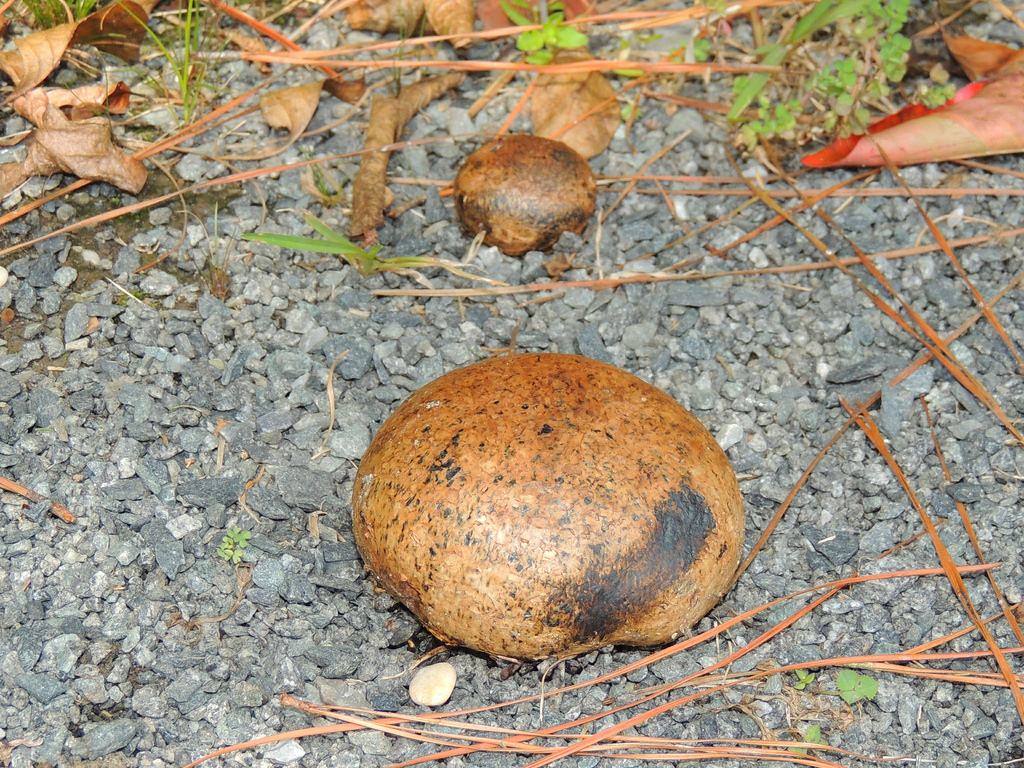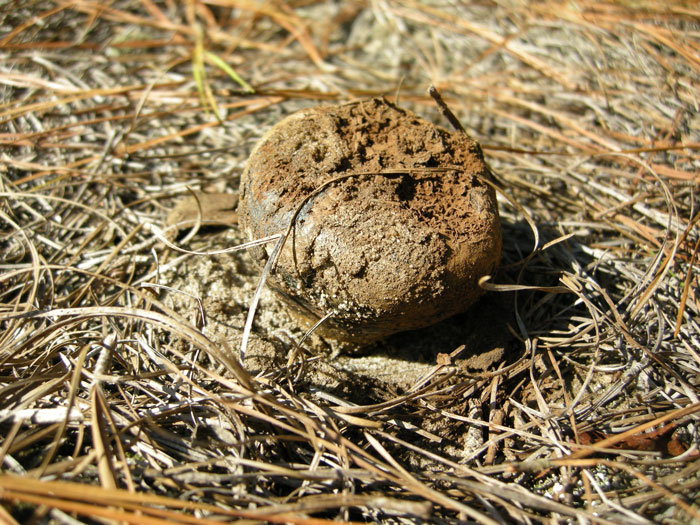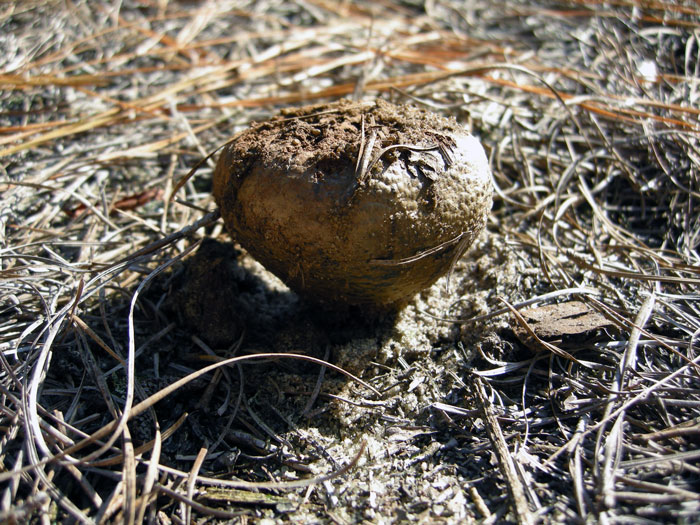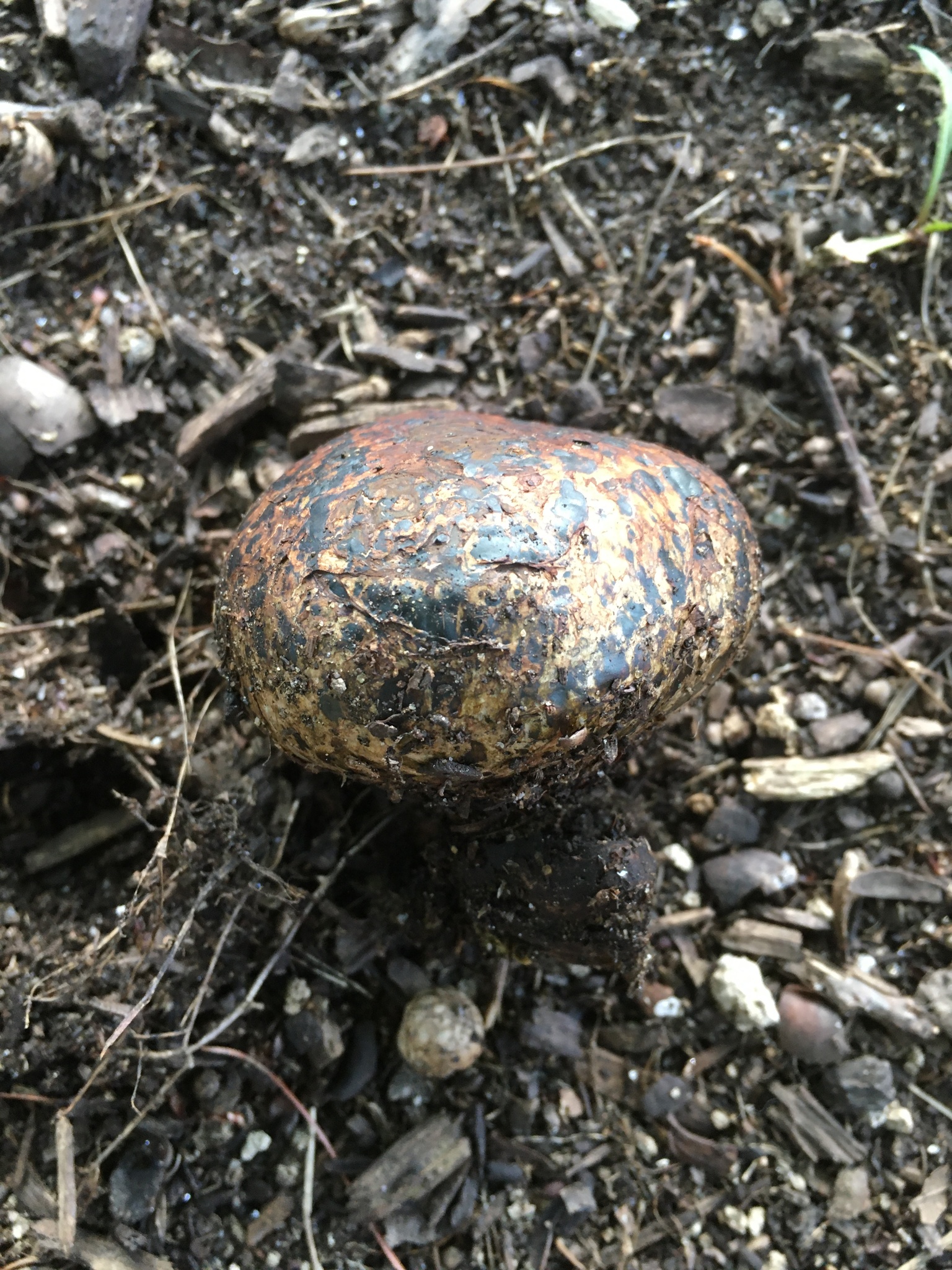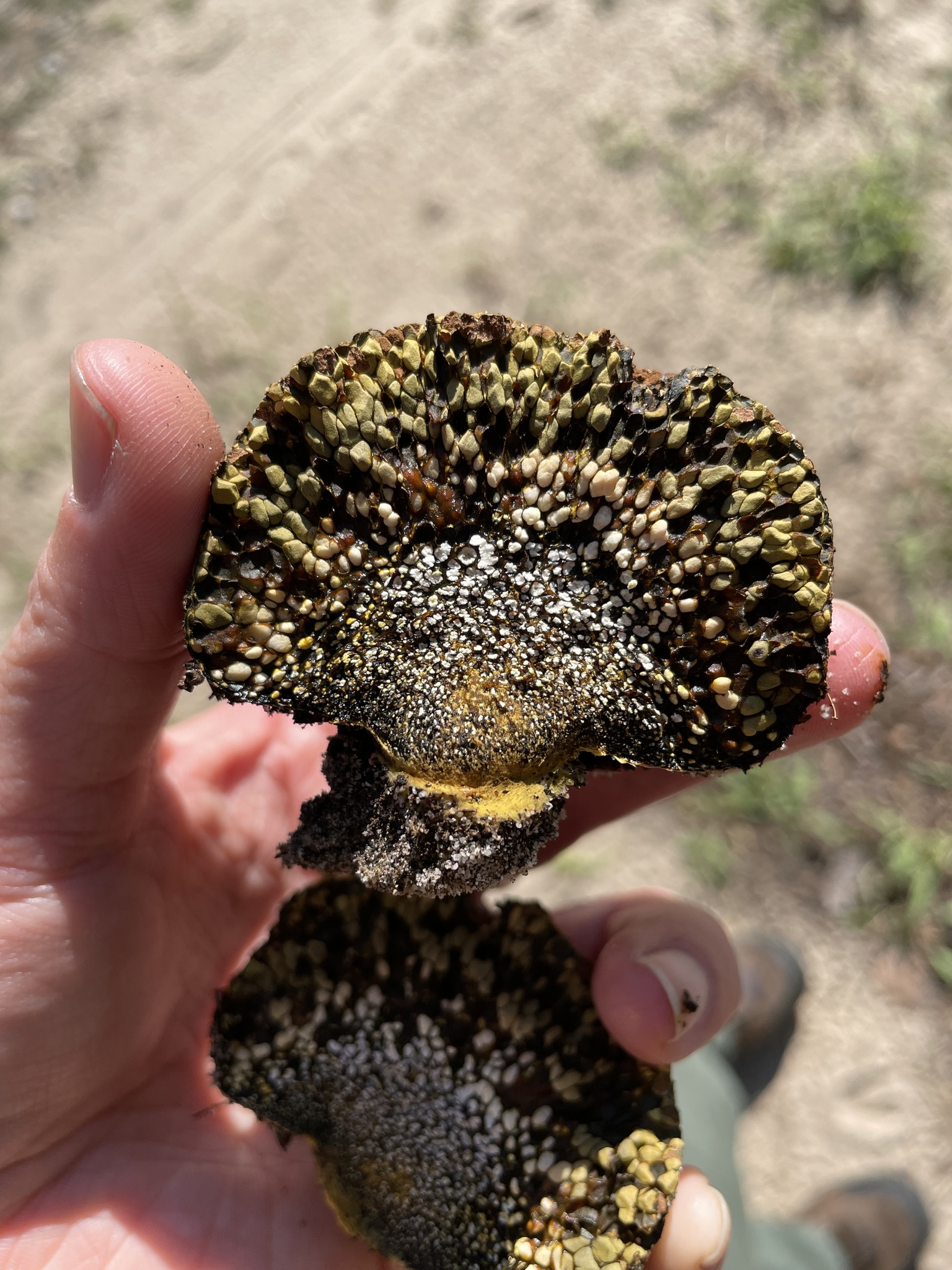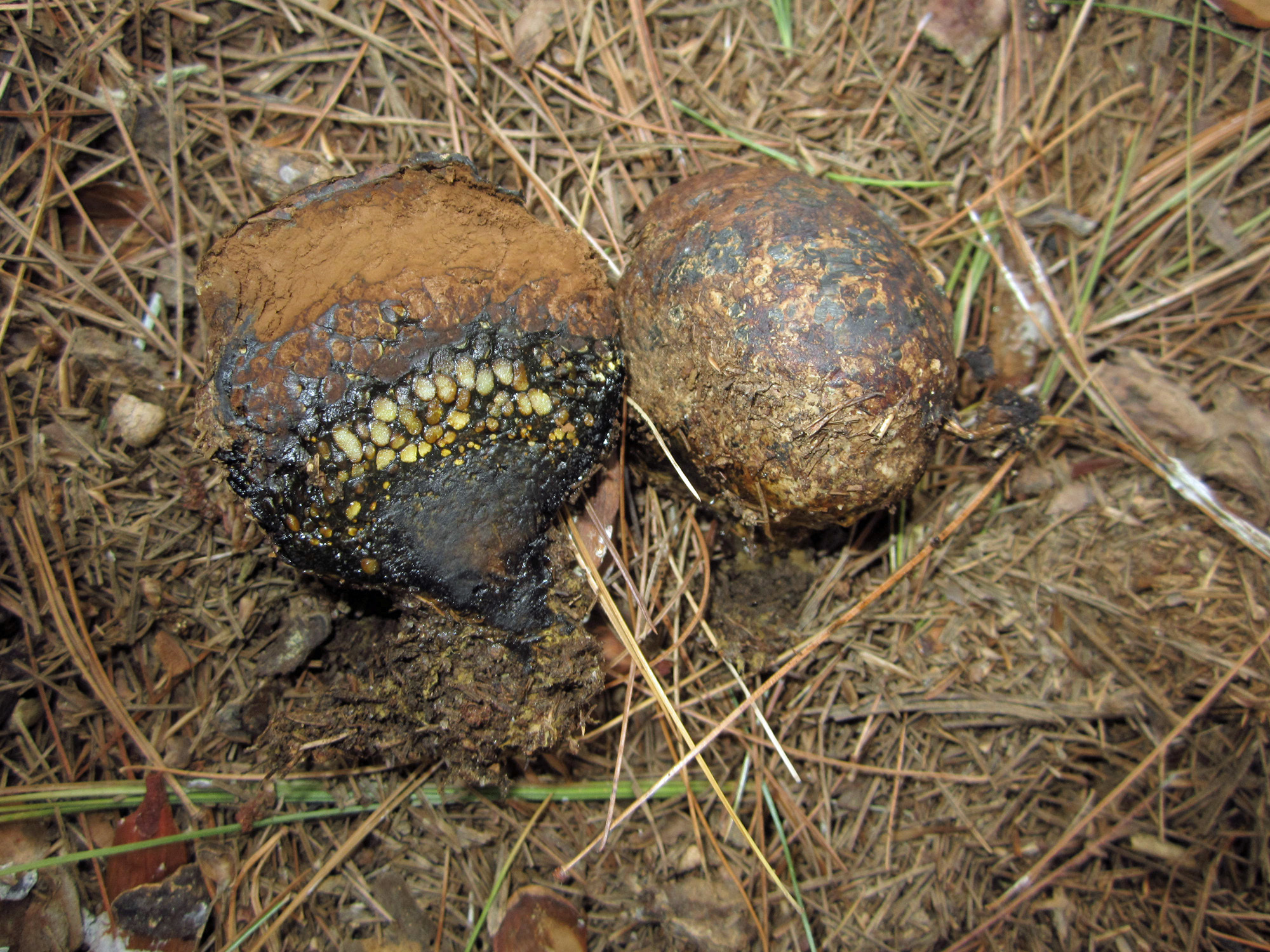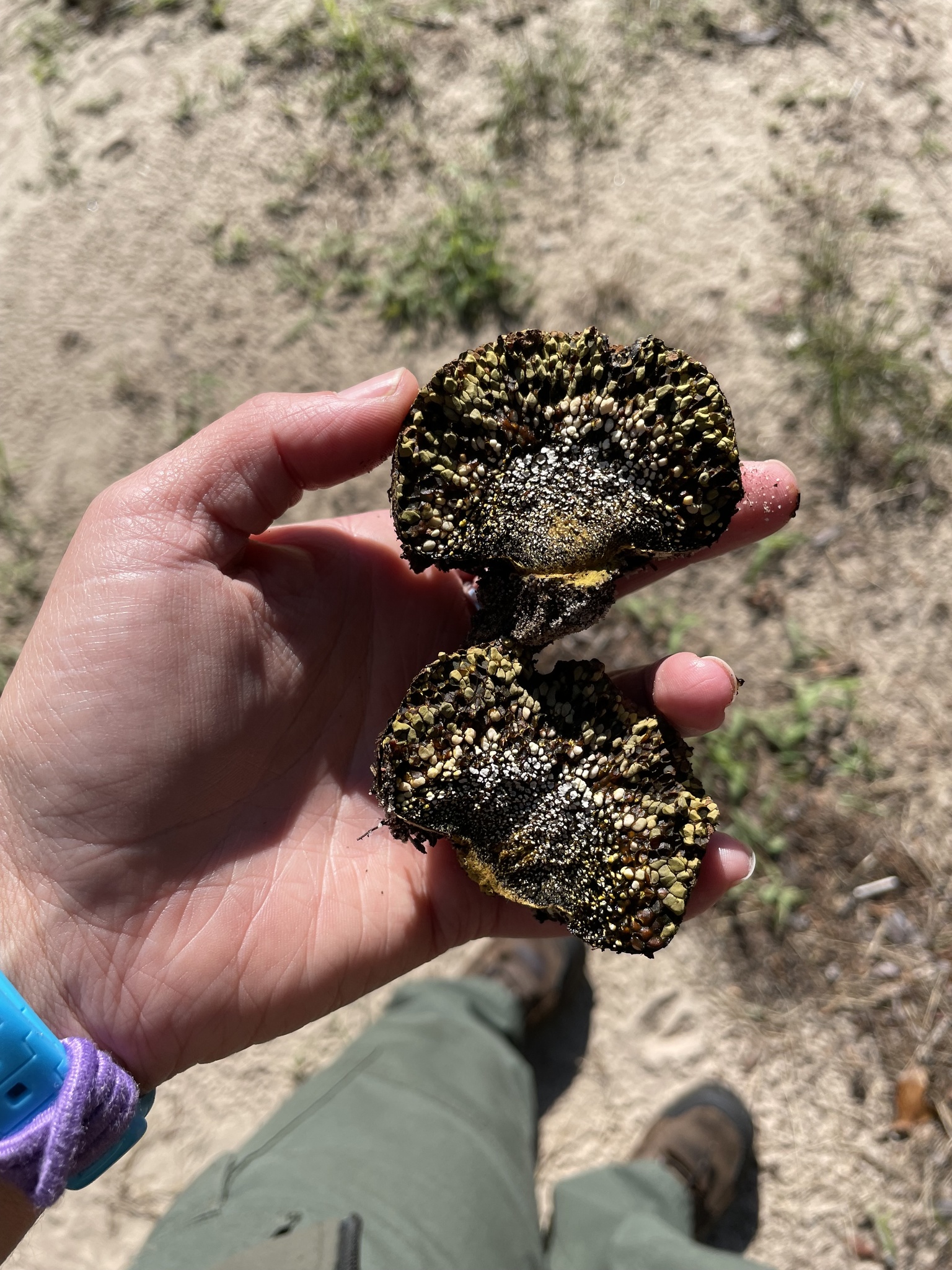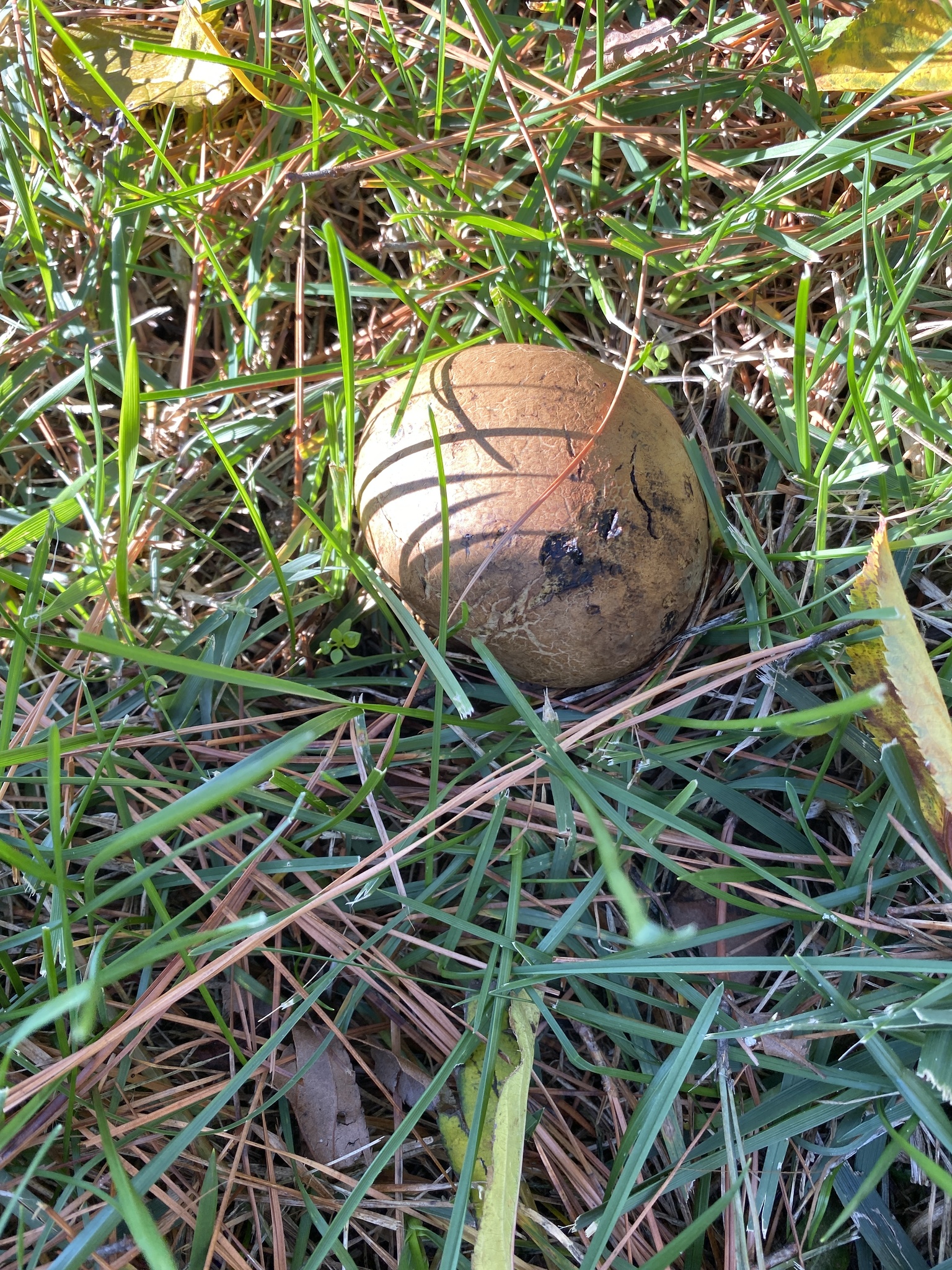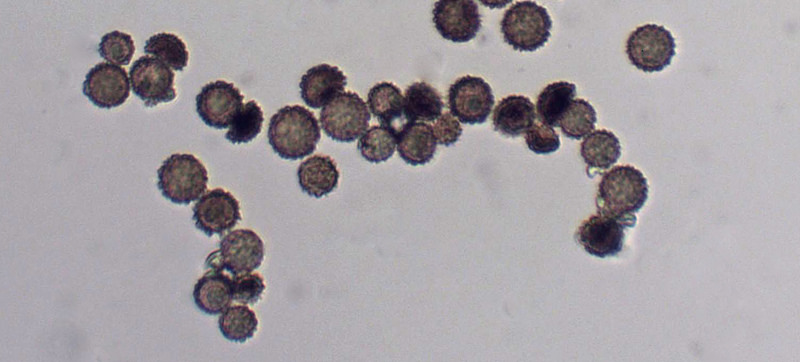Map Snapshot






13 Records
Status
Found solitary or in groups on ground (often in infertile, sandy soil); mycorrhizal, especially with pines and oaks.
Description
Fruiting body variable in shape, usually oval to club-shaped with a stalk-like rooting base; smooth; yellowish to brown. Outer layer splits irregularly, exposing spore cases embedded in a black gelatinous material; spores at maturity brown, powdery. (J. Solem, pers. comm.)
Relationships
This species is an important mycorrhizal fungus for newly established pine forests. Like Thelephora, it is often inoculated onto pine roots. The blackish jelly has the capability of staining cloth with a bright olivaceous yellow pigment, which is quite valuable in the wool-dying industry. (L. Biechele, pers. comm.)
Seasonality Snapshot
Source: Wikipedia
| Pisolithus arhizus | |
|---|---|

| |
| Scientific classification | |
| Domain: | Eukaryota |
| Kingdom: | Fungi |
| Division: | Basidiomycota |
| Class: | Agaricomycetes |
| Order: | Boletales |
| Family: | Sclerodermataceae |
| Genus: | Pisolithus |
| Species: | P. arhizus
|
| Binomial name | |
| Pisolithus arhizus (Scop.) Rauschert (1959)
| |
| Synonyms | |
Pisolithus arhizus, commonly known as the dead man's foot, dyeball,[1] pardebal, or Bohemian truffle, is a widespread earth-ball like fungus, which may in fact be several closely related species. This puffball's black viscous gel is used as a natural dye for clothes.[2] Pisolithus arhizus is a major component in mycorrhizal fungus mixtures that are used in gardening as powerful root stimulators.[3] It is inedible.[4]
In South Africa, it is known as the pardebal, and in Europe, it is known as the Bohemian truffle.
The fruiting body is 5–30 cm tall and 4–20 cm wide, with a thin yellow-brown to brown exterior layer.[5] The spores are brown.[5]
Dictyocephalos attenuatus is similar.[5]
References
[edit]- ^ Wood, Michael; Stevens, Fred. "California Fungi: Pisolithus arhizus". MycoWeb.com. Retrieved 2017-04-06.
- ^ Roberts P, Evans S (2011). The Book of Fungi. Chicago, Illinois: University of Chicago Press. p. 525. ISBN 978-0-226-72117-0.
- ^ Kuo M, Methven A (2010). 100 Cool Mushrooms. University of Michigan Press. p. 143. ISBN 978-0-472-03417-8.
- ^ Phillips, Roger (2010). Mushrooms and Other Fungi of North America. Buffalo, NY: Firefly Books. p. 335. ISBN 978-1-55407-651-2.
- ^ a b c Davis, R. Michael; Sommer, Robert; Menge, John A. (2012). Field Guide to Mushrooms of Western North America. Berkeley: University of California Press. pp. 374–375. ISBN 978-0-520-95360-4. OCLC 797915861.
External links
[edit]| Pisolithus arhizus | |
|---|---|
| Glebal hymenium | |
| No distinct cap | |
| Hymenium attachment is irregular or not applicable | |
| Lacks a stipe | |
| Spore print is brown | |
| Ecology is mycorrhizal | |
